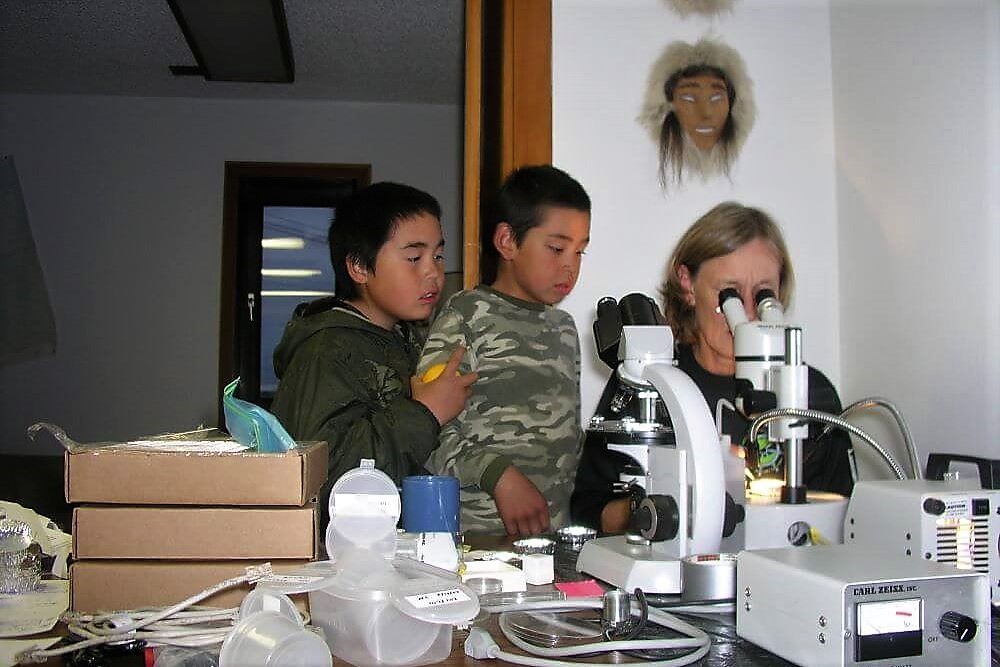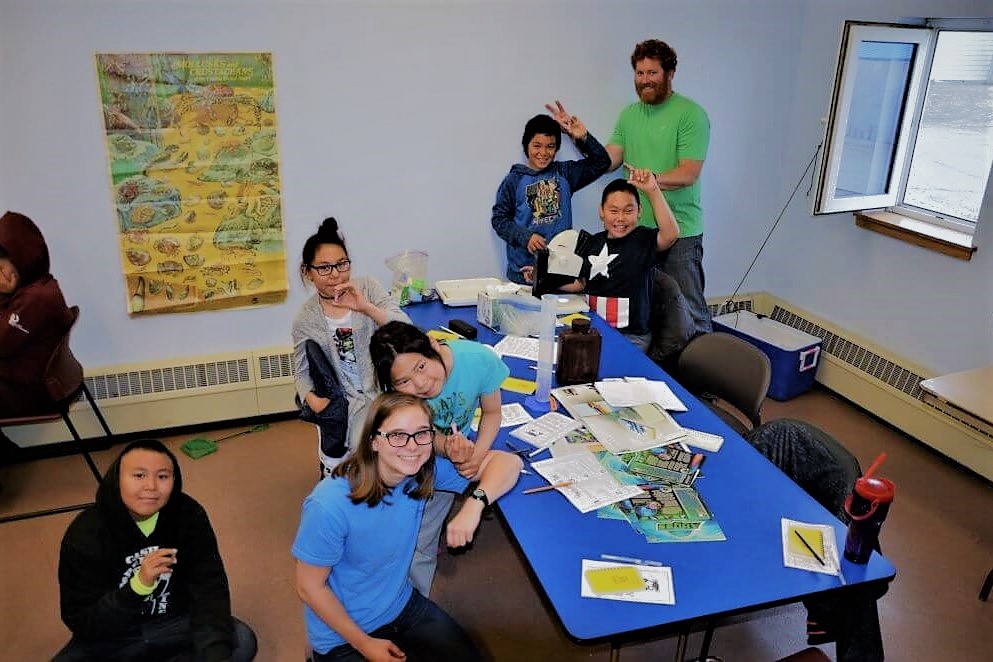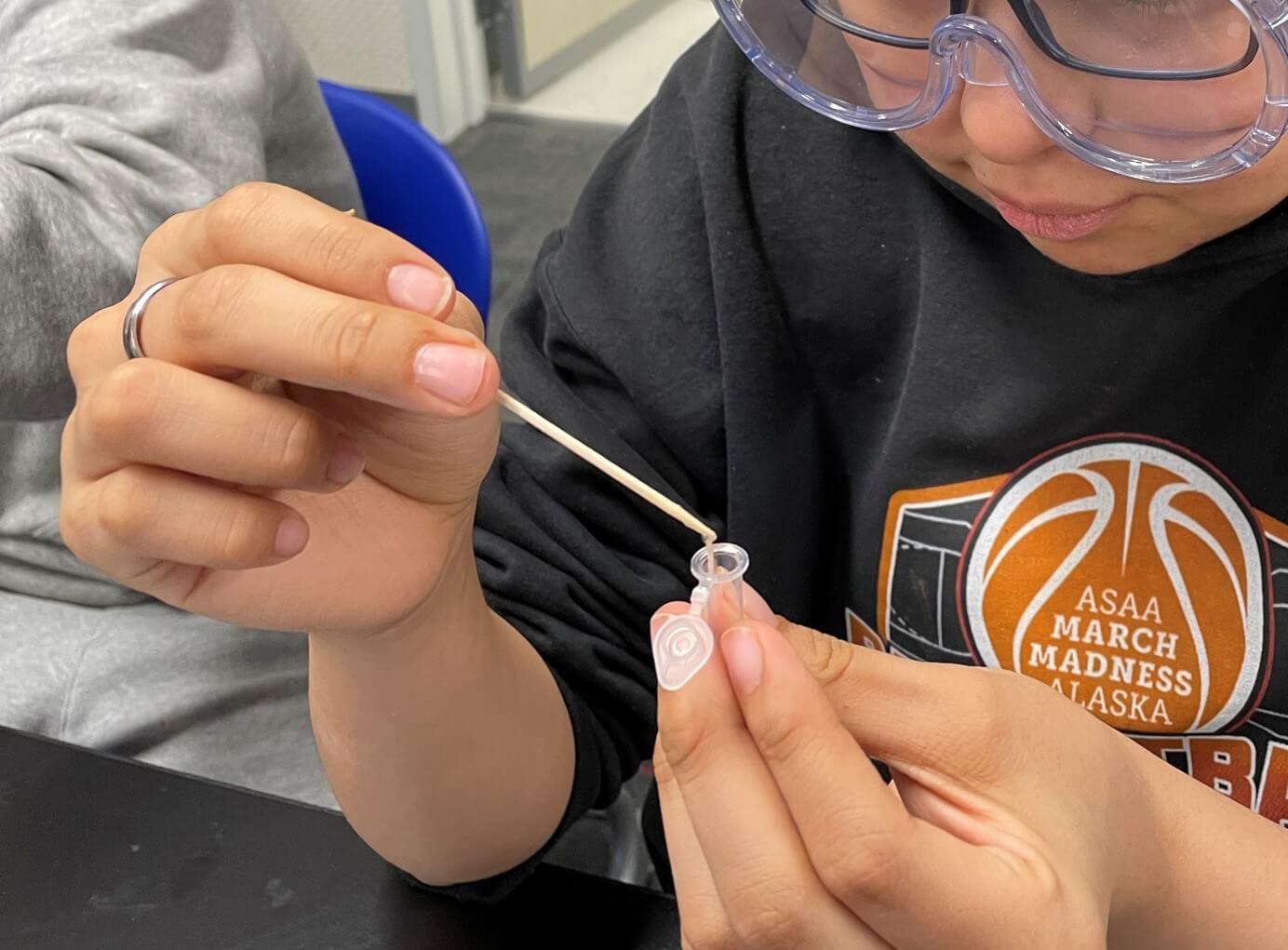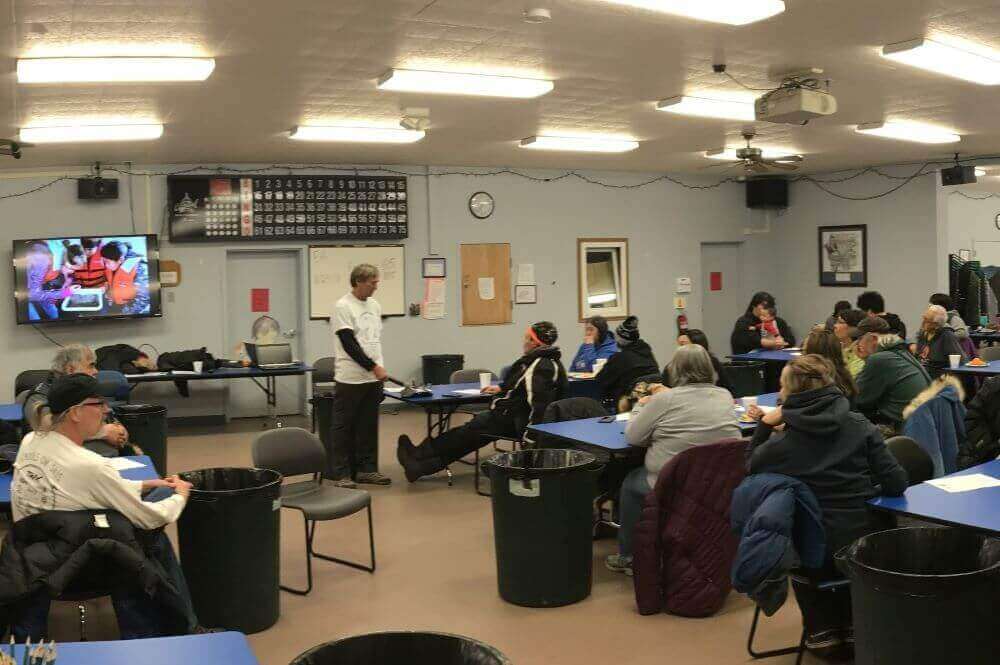BLE LTER Outreach and Community Engagement
We take a multi-pronged approach to engage broader audience in our science and research. Through our K-12 education programs, we connect students with hands-on ecology learning and assist educators in creating curricula surrounding Arctic science. Our knowledge exchange efforts include involving local elders when planning our research. We also partner with artists to expand understanding and appreciation of Beaufort lagoons.
Our story
BLE LTER principal investigator Ken Dunton first visited Kaktovik as a young field researcher in 1977. Ken found the Inupiat people of Kaktovik extremely friendly and was deeply inspired by their subsistence lifestyle and deep understanding of the eastern Alaska Beaufort Sea coast. Although Ken continued to visit Kaktovik through the early 1980s, extended summer stays on Barter Island did not begin until 2007. In 2007 his research team spent countless hours with the young children of Kaktovik, who were fascinated by the organisms and the lab and field gear employed by the scientists. Village elders were also appreciative and suggested that he develop a more formal science program.
In August 2008, with co-sponsorship from the Kaveolook School and the U. S. Fish and Wildlife Service Arctic Refuge staff, Ken’s team initiated their first K-12 Oceanography Program for Kaktovik school-aged children. In 2011, under a newly funded NSF grant to study Beaufort Sea lagoons, Ken initiated a more formal program focused on providing students with hands-on science activities, both laboratory and field oriented. The new effort was aligned with a desire to develop an interactive partnership between scientists with K-12 students and teachers in school districts, with focus on issues related to Arctic living resources and native cultures. Following the end of the NSF Lagoons study, the Kaktovik Oceanography Program continued under support from other partners that included colleagues from USGS and BOEM. We began to develop a model that placed an emphasis on younger children during the summer months and developing strong relationships with the principal and teachers at Kaveolook School to work with middle and high school students during the first week of classes in August.
With continued support from the community of Kaktovik, Arctic Refuge, the BLE LTER, and other federal partners, we hope to continue to provide local students with valuable experiences that give them access to new technology, especially as these new approaches become available to study the effects of rapid environmental change on Arctic coastlines. We have begun programs in which students are involved in measuring erosion of their receding shoreline and participating with scientists whom are collecting oceanographic data from the ice surface (April 2019). Since the pandemic, we have moved, at least temporarily, to virtual programming until we can resume hands-on activities in the field.

2007: Students explore specimens under the microscope with BLE research associate Susan Schonberg.

2018: Students pose with BLE program manager Nathan McTigue and former graduate student Kristina Baker.
Our programs
K-12 Education
We regularly partner with Harold Kaveolook School in Kaktovik, Alaska, to organize field trips to our study sites and bring BLE scientists into classrooms for science lessons. Each August, in collaboration with the U.S. Fish and Wildlife Service, we run the Kaktovik Oceanography Program (KOP) where K-12 students get a full week of awesome Arctic science! BLE graduate students, guest scientists from partner organizations, and experienced teachers from the lower 48 all take part in leading unique learning activities that match grade-appropriate standards.


Arctic Nuggets
Plans changed for 2020-2021 due to the pandemic, so we focused on meaningful, distance-delivered lessons and activities for K-12 students. We call these distance-delivered educational activities "Arctic Nuggets." The activities are organized into four topics, and emphasize developmentally appropriate, place-based, experiential learning for kindergarten through high school grade bands. Arctic Nuggets combine virtual visits and Q&A with guest scientists (BLE graduate students and experts from partner organizations) and hands-on activities through which students get to explore and investigate the topic more directly. During spring of 2021, all grades of Harold Kaveolook School in Kaktovik, Alaska participated in these fun, engaging Arctic Nuggets! Our education partner at the U.S. Fish and Wildlife Service (Allyssa Morris) was also able to lead additional virtual presentations about owls and owl pellet dissection labs with all the four 5th grade classes of Fred Ipalook Elementary School in Utqiagvik, Alaska.
Knowledge sharing
The Alaskan Arctic coast is the traditional home of the Iñupiaq, who make up the majority of the population on the North Slope. In collaboration with the Bureau of Ocean Energy Management and North Slope Borough Fish and Wildlife Department, we formed a panel of traditional knowledge holders in Kaktovik, Alaska to advise us on emerging ideas and research plans and to act as a conduit for knowledge exchange between BLE and the community.
We also share knowledge with local communities in-person through the Barrow Science Fair and Kaktovik Community meetings, in print through our newsletter The Lagoon Exchange, and online via our Facebook page.


Art making
We collaborate with University of Virginia Music professor Matthew Burtner, who is creating a piece by sonifying environmental data from Kaktovik Lagoon. Dr. Burtner joined us for an afternoon of experiential learning with Kaktovik high school students, where students explored the under-ice environment visually with an ROV, and sonically with microphones and hydrophones.
Follow our projects
Follow us on our #scicomm platforms to get the latest updates, and to connect with the various communities we belong to: Alaskan Arctic communities, Alaska scientists, the LTER network.